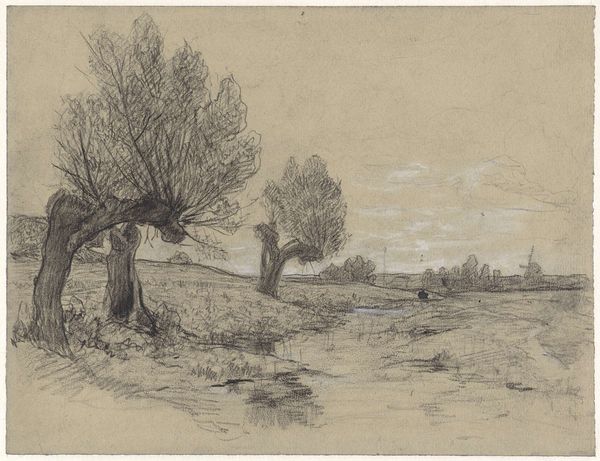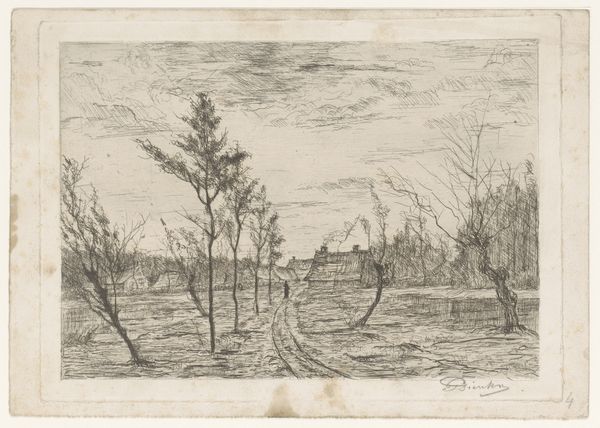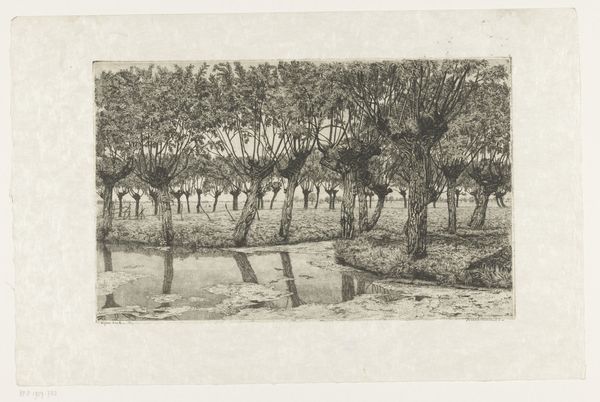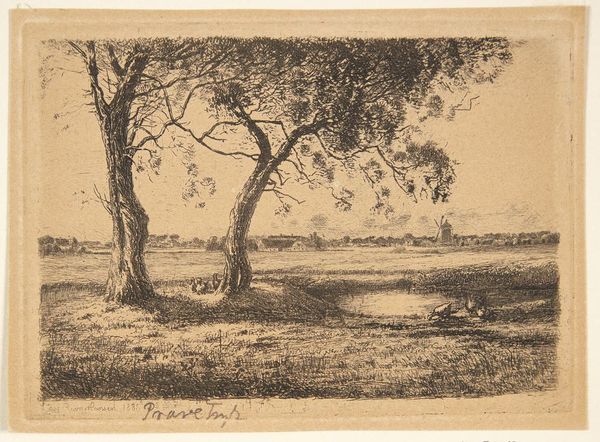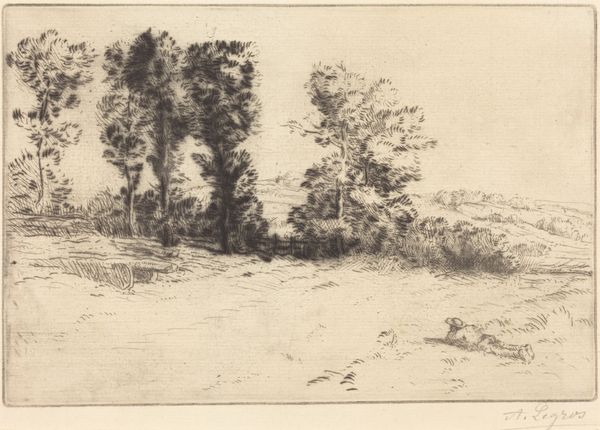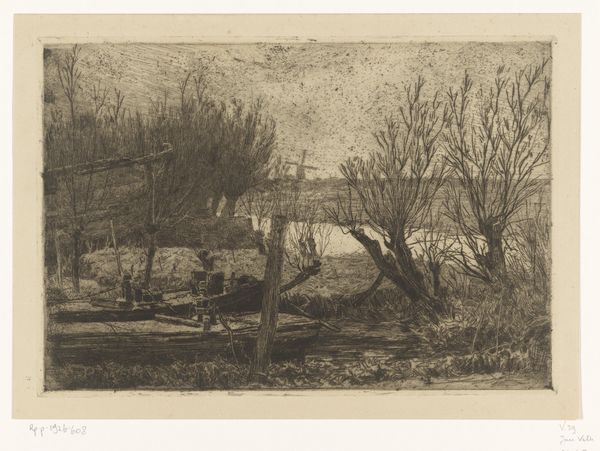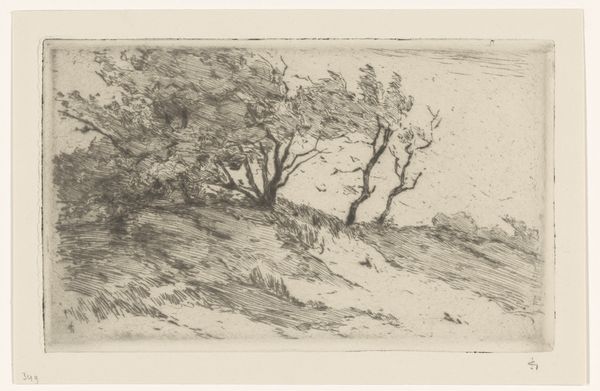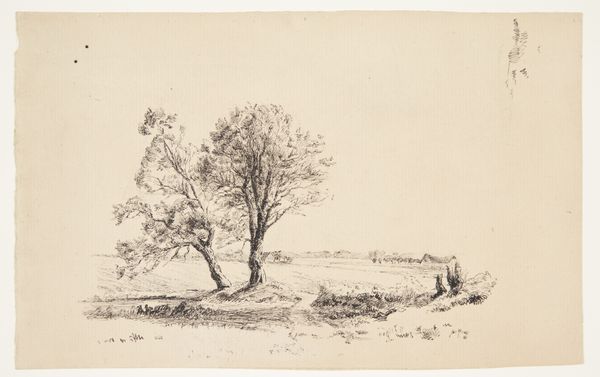
Dimensions: height 231 mm, width 319 mm
Copyright: Rijks Museum: Open Domain
Curator: This quiet landscape before us is titled "Weiland met knotwilgen", or "Paddock with pollard willows," created by Cornelia Christina Johanna van Trigt-Hoevenaar between 1864 and 1909. It's a pencil drawing currently held at the Rijksmuseum. Editor: Immediately, I'm struck by the bareness of the scene; the skeletal trees against the muted sky give off an air of solemnity and the stillness of winter. Curator: It's interesting that you perceive a somber mood. During that time period, landscape paintings were increasingly recognized as having both aesthetic and social value in establishing notions of national identity and romantic attachment to place. Given that van Trigt-Hoevenaar, as a female artist, operated in a context that significantly marginalized women from artistic networks and opportunities, what stories do you suppose that she might be hinting at by embracing these kinds of motifs in a way that simultaneously engages and deviates from familiar conventions? Editor: The deliberate use of pencil suggests an intimate connection to nature, a desire for authenticity. And that decision of location--*plein air*, outside--that asserts her presence in that world and her claim to experiencing the land directly, rather than filtered through a male gaze or idealized constructs. This allows her to speak to more universal concepts, like identity, perseverance and overcoming obstacles, regardless of gender, but while hinting at the politics surrounding that time. Curator: Exactly. Van Trigt-Hoevenaar may be utilizing a common medium like pencil, but she still is creating the experience of viewing nature, of being present, perhaps to engage with discussions related to nature conservancy while offering her unique experience of seeing. It challenges a kind of patriarchal structure prevalent at the time. The choice of willows, for instance, could allude to their historical function and utility in a place's economy while she gives it a different take. The artist uses natural settings to explore those interactions within specific spaces in new ways. Editor: Well, seeing it that way definitely allows you to reimagine what otherwise appears to be an understated image of some peaceful willows! Thanks for this perspective. Curator: My pleasure. By considering van Trigt-Hoevenaar's experience, this simple pastoral scene becomes a space filled with potential dialogues, resonating with broader socio-political narratives surrounding artmaking.
Comments
No comments
Be the first to comment and join the conversation on the ultimate creative platform.

